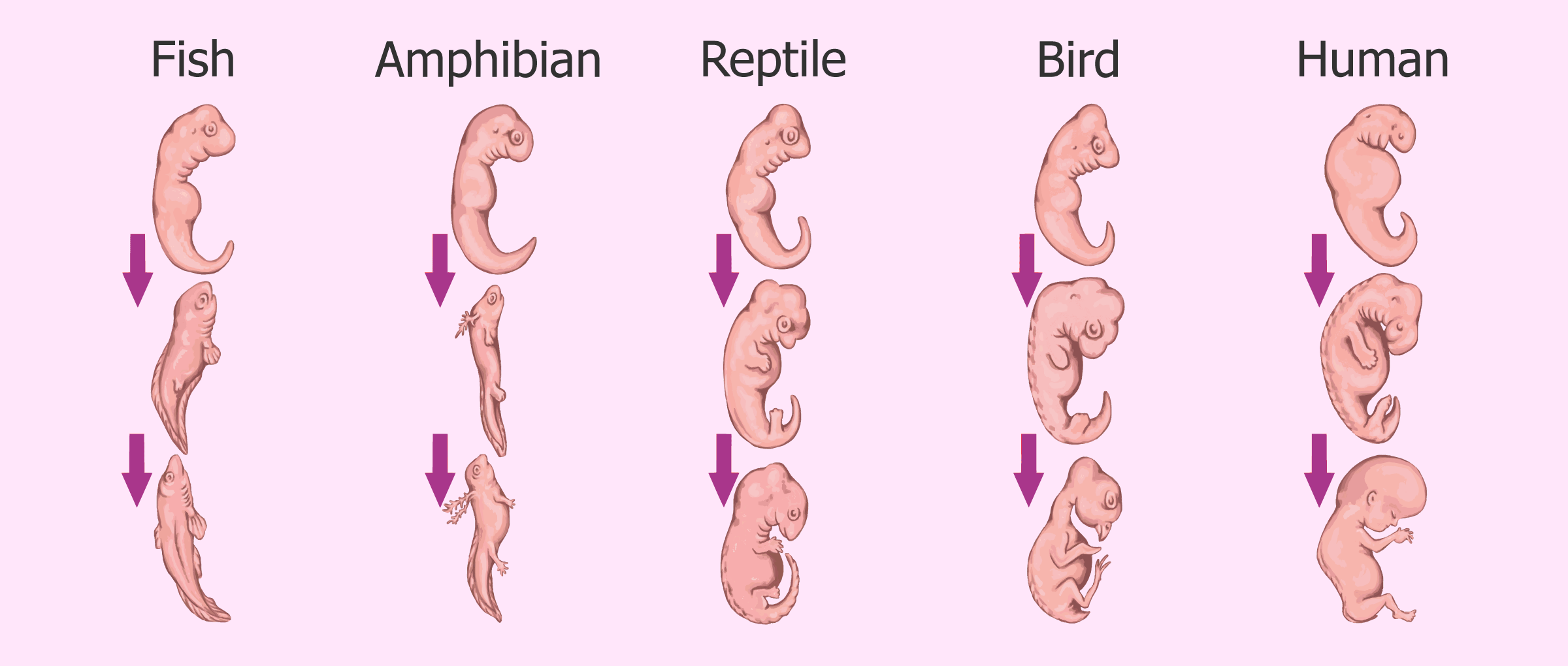How did the discovery of DNA prove that Darwin’s theory of evolution was correct?
Darwin’s theory of evolution, “that species can change over time, new species come from pre-existing species, and that all species share a common ancestor” was proved through the discovery of DNA because of mutations found in DNA and adaptation through generations. DNA does not stay the same, it changes and mutates through generations in order for that specific animal or species to be fitter for the environment. For example, the finches that reside on the Galapagos islands all have different beaks depending on where they live and what their diet is. This is due to them adapting for the environment so that they are fitter and better suited for that specific island. Mutations can be observed through homologous structures, many of which are most easily observed in the embryotic stages of life. DNA switches are another thing that supports the theory Darwin had. Switches are a piece of DNA that turn certain genes “on” and “off”. The genes are turned on or off in different and unique patterns to allow for differentiation of cells. Additionally, all vertebrates have gill like slits and tails in very early stages, that then form into different structures. As they develop, these features change into something new, such as in humans, the “gills” become bones in our ears and the tails shrink until they are no longer visible. These shared homologous structures suggest that we once shared a common ancestor.
 Fossils show that around 365 million years ago was when the first creatures with legs appeared. This creature is called the Tiktaalik and had front flippers that could support itself like legs. The Tiktaalik is thought to be the creature from which all land dwellers evolved from and has a distinctive feature from fish, which is it’s arm bone. The genes that were needed to form arms and legs were found in all pre-historic fish, all that was needed was a few mutations to occur.
Fossils show that around 365 million years ago was when the first creatures with legs appeared. This creature is called the Tiktaalik and had front flippers that could support itself like legs. The Tiktaalik is thought to be the creature from which all land dwellers evolved from and has a distinctive feature from fish, which is it’s arm bone. The genes that were needed to form arms and legs were found in all pre-historic fish, all that was needed was a few mutations to occur.  Another example of DNA switches is that there is simply a one percent difference of DNA between humans and chimps. The two distinctive features of humans are our thumbs and our brains. It has been observed that there is a mutation in our jaw muscle that allows the skull to continue growing into adulthood, which in turn allows more space for the brain to grow and expand. The same cannot be said for chimps, which could be why we have evolved more than them, as our brains are able to grow and develop with more space. This mutation is what can cause microcephaly. Finally, Darwin’s theory of evolution was correct and can be supported by evidence found in the embryotic stage of land animals’ life as well as the development of learning about switches in DNA that allow for certain genes to be turned on and off and allow for mutations to occur.
Another example of DNA switches is that there is simply a one percent difference of DNA between humans and chimps. The two distinctive features of humans are our thumbs and our brains. It has been observed that there is a mutation in our jaw muscle that allows the skull to continue growing into adulthood, which in turn allows more space for the brain to grow and expand. The same cannot be said for chimps, which could be why we have evolved more than them, as our brains are able to grow and develop with more space. This mutation is what can cause microcephaly. Finally, Darwin’s theory of evolution was correct and can be supported by evidence found in the embryotic stage of land animals’ life as well as the development of learning about switches in DNA that allow for certain genes to be turned on and off and allow for mutations to occur.
How does it change the way we view evolution today and into the future?
Today evolution is an accepted part of how we came to be in the science community, the process where traits are passed from parent to offspring and gradual change occurs over many generations. Darwin’s theory on evolution along with the discovery and continued knowledge of DNA and how it works is a strong starting point for future development of evolutionary knowledge. The knowledge of how DNA works and the mutations that can occur will continue to aide in the science communities’ path to finding reasoning and cures to many different mutations that humans experience.
Sources:
(2) What Darwin Never Knew NOVA HD – YouTube
Homologous structures – Definition and Examples | Biology Online Dictionary